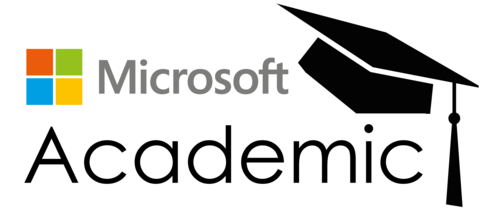Innovative Strategies for Sustainable Business Growth in the Digital Age
Keywords:
Sustainable growth, Digital transformation, Innovation strategies, Business models, Organizational resilienceAbstract
The rapid advancements in digital technologies have fundamentally transformed the global business landscape, presenting both unprecedented opportunities and challenges. This paper explores innovative strategies that organizations can adopt to achieve sustainable growth in the digital age. By integrating insights from recent research and case studies, the paper highlights the role of digital transformation, adaptive business models, and resilient organizational cultures in fostering long-term success. The analysis emphasizes the importance of aligning technological advancements with sustainability goals, ensuring that economic progress does not come at the cost of environmental and social responsibilities. The findings provide actionable recommendations for businesses seeking to remain competitive while contributing positively to society. This review serves as a comprehensive guide for scholars, policymakers, and practitioners aiming to navigate the complexities of modern business ecosystems.
References
Porter, M. E., & Heppelmann, J. E. (2014). How smart, connected products are transforming companies. Harvard Business Review.
Christensen, C. M., Raynor, M. E., & McDonald, R. (2015). What is disruptive innovation? Harvard Business Review.
Kaplan, R. S., & Norton, D. P. (2004). Strategy maps: Converting intangible assets into tangible outcomes. Harvard Business School Press.
Brynjolfsson, E., & McAfee, A. (2014). The second machine age: Work, progress, and prosperity in a time of brilliant technologies. W.W. Norton & Company.
Kotler, P., & Keller, K. L. (2016). Marketing management. Pearson Education.
Osterwalder, A., & Pigneur, Y. (2010). Business model generation. John Wiley & Sons.
Teece, D. J. (2010). Business models, business strategy and innovation. Long Range Planning, 43(2-3), 172-194.
Senge, P. M. (2006). The fifth discipline: The art and practice of the learning organization. Crown Business.
Elkington, J. (1997). Cannibals with forks: The triple bottom line of 21st-century business. Capstone Publishing.
Prahalad, C. K., & Krishnan, M. S. (2008). The new age of innovation. McGraw Hill.
Goleman, D. (1995). Emotional intelligence. Bantam Books.
Barney, J. (1991). Firm resources and sustained competitive advantage. Journal of Management, 17(1), 99-120.
Akbar, K. (2022). Artificial Intelligence Apps for COVID-19 virus. Academia Letters, Article 4845. https://doi.org/10.20935/AL4845.
Grant, R. M. (1996). Toward a knowledge-based theory of the firm. Strategic Management Journal, 17(S2), 109-122.
Eisenhardt, K. M., & Martin, J. A. (2000). Dynamic capabilities: What are they? Strategic Management Journal, 21(10-11), 1105-1121.
Drucker, P. F. (1999). Management challenges for the 21st century. HarperBusiness.
Hamel, G., & Prahalad, C. K. (1994). Competing for the future. Harvard Business School Press.
Mintzberg, H., Ahlstrand, B. W., & Lampel, J. (2005). Strategy safari. Simon and Schuster.
Heifetz, R. A., Grashow, A., & Linsky, M. (2009). The practice of adaptive leadership. Harvard Business Press.
Schumpeter, J. A. (1942). Capitalism, socialism, and democracy. Harper & Brothers.
Rogers, E. M. (2003). Diffusion of innovations. Free Press.
Tushman, M. L., & O'Reilly, C. A. (1996). Ambidextrous organizations: Managing evolutionary and revolutionary change. California Management Review, 38(4), 8-30.
Freeman, R. E. (1984). Strategic management: A stakeholder approach. Cambridge University Press.
Kaplan, R. S., & Norton, D. P. (1996). The balanced scorecard: Translating strategy into action. Harvard Business School Press.
Barney, J. B., & Hesterly, W. S. (2012). Strategic management and competitive advantage. Pearson.
Kim, W. C., & Mauborgne, R. (2005). Blue ocean strategy. Harvard Business Review Press.
McKinsey & Company (2020). The future of work after COVID-19. McKinsey Global Institute.
World Economic Forum (2021). The global risks report. World Economic Forum.
OECD (2019). Measuring the digital transformation. OECD Publishing.
United Nations (2015). Transforming our world: The 2030 agenda for sustainable development. United Nations Publishing.
Bocken, N. M. P., Short, S. W., Rana, P., & Evans, S. (2014). A literature and practice review to develop sustainable business model archetypes. Journal of Cleaner Production, 65, 42-56.
Downloads
Published
How to Cite
Issue
Section
License
Copyright (c) 2025 Asian Journal of Business Management Sciences (AJBMS)

This work is licensed under a Creative Commons Attribution-NonCommercial-NoDerivatives 4.0 International License.











